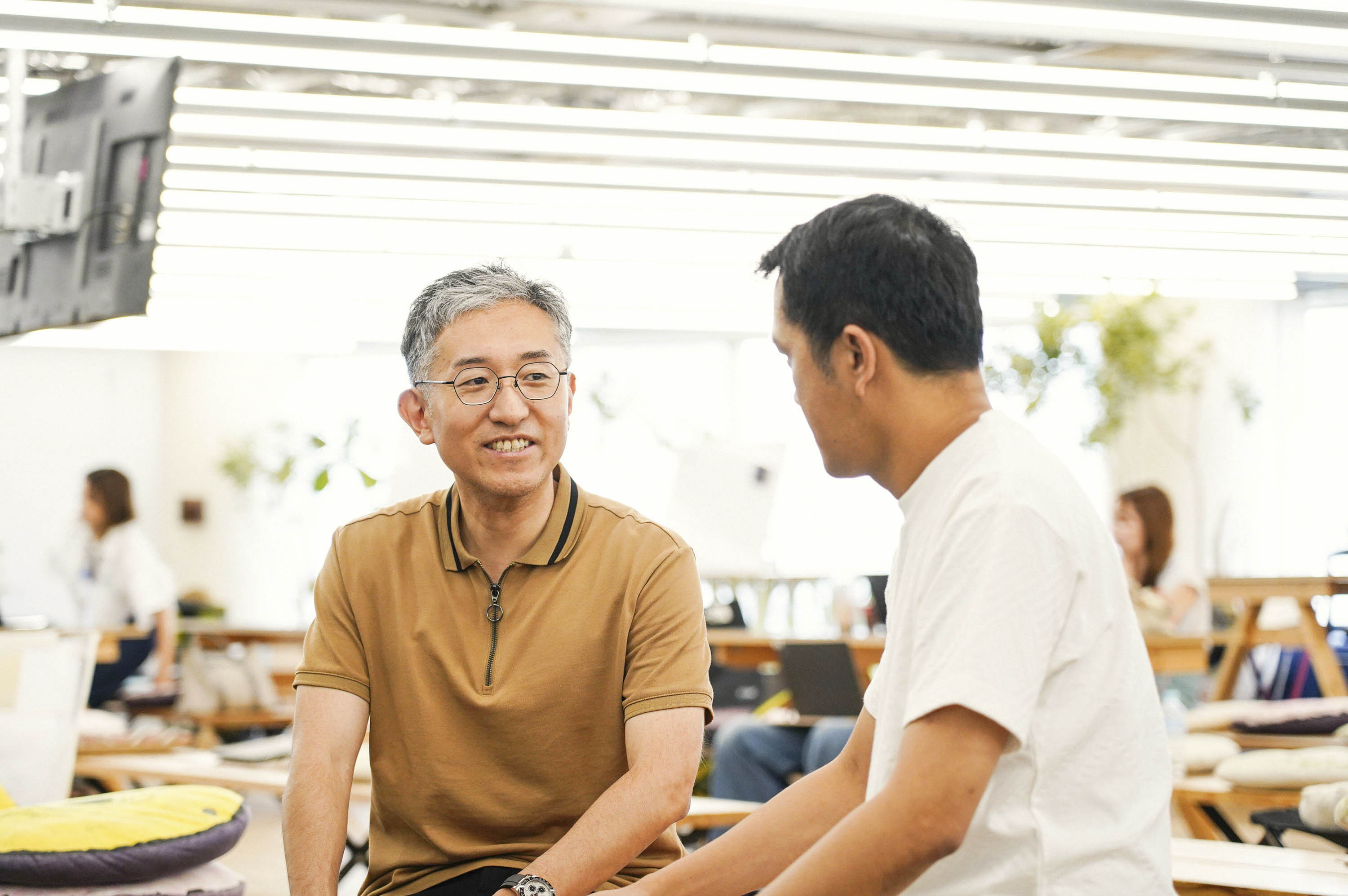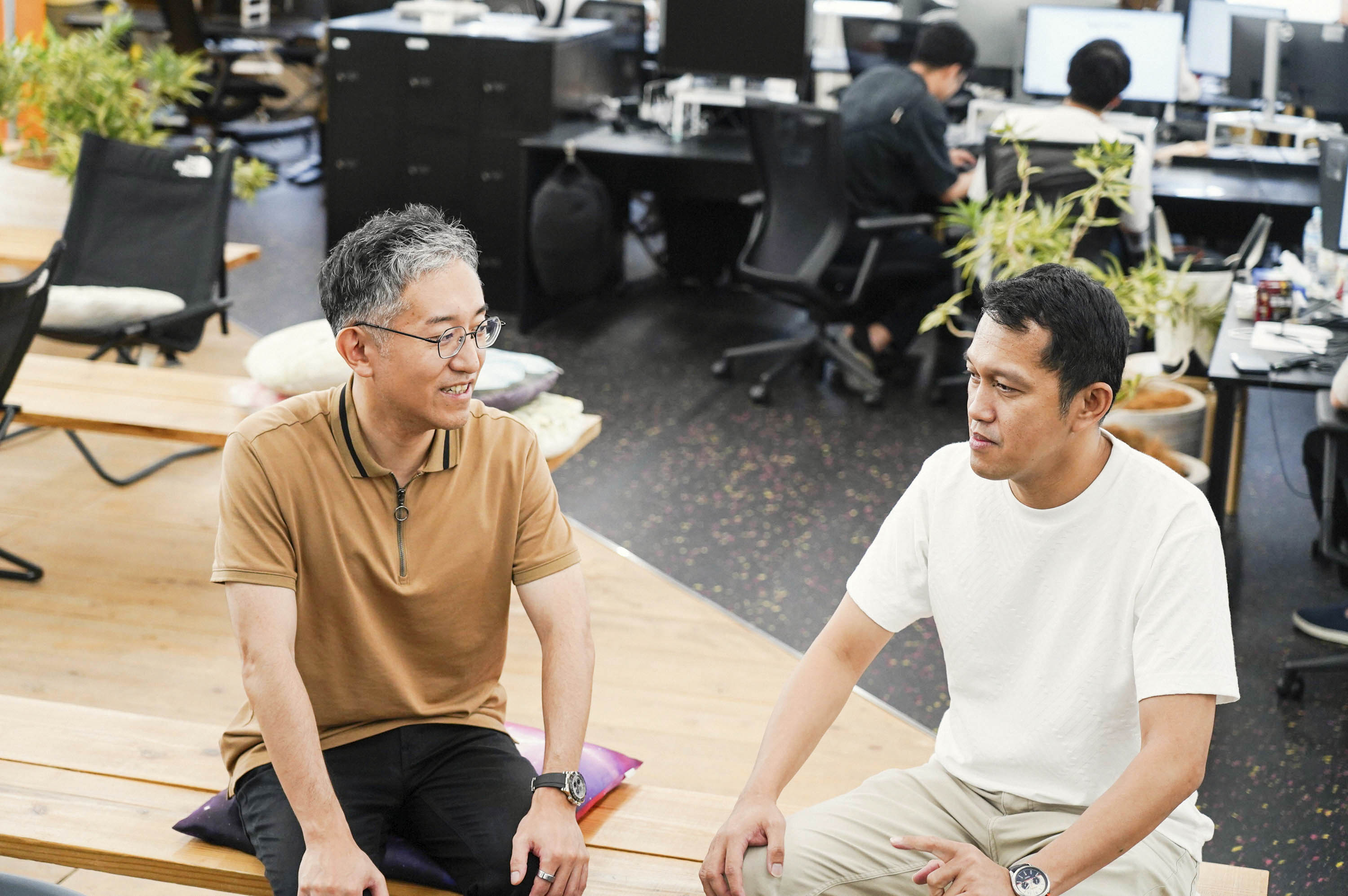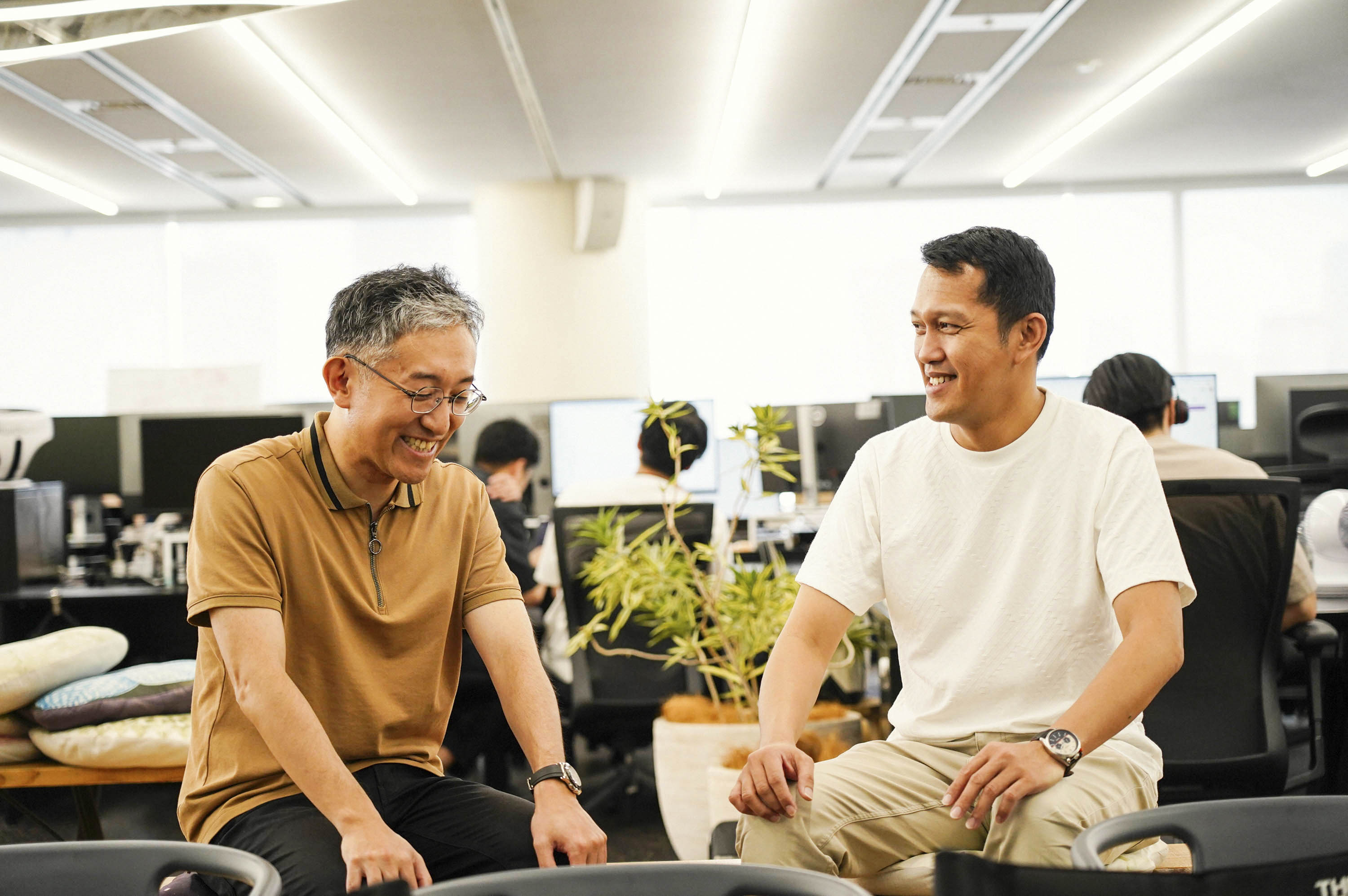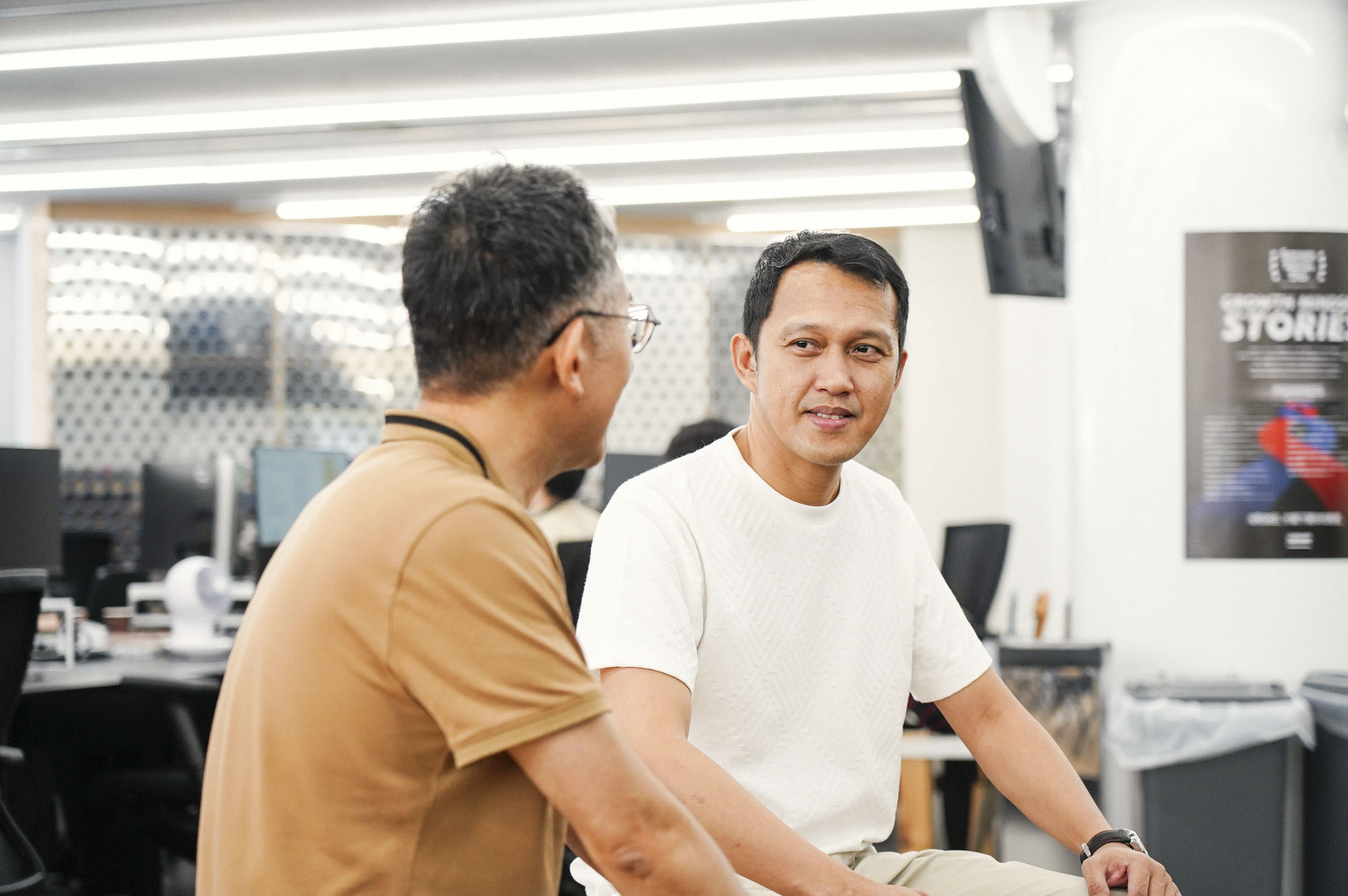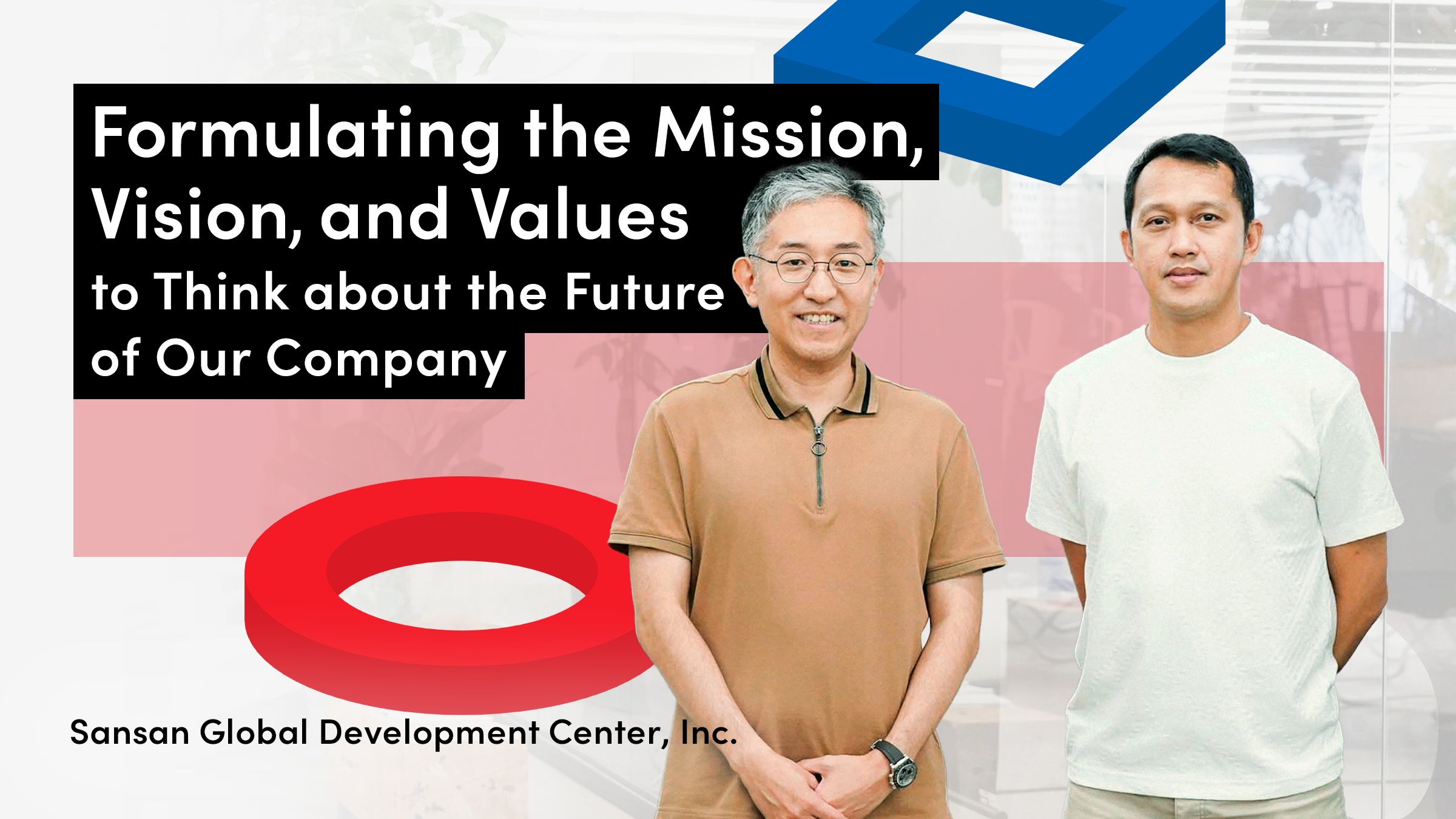
Sansan expanded its operations to Cebu, Philippines, in 2022 and in 2023, officially launched the Sansan Global Development Center (SGDC) with the aim of developing Sansan products from a global perspective. In 2024, SGDC began formulating its own mission, vision, and values (MVV) to clarify its direction amid the rapidly growing number of members.
In keeping with Sansan's culture of everyone thinking and deciding, SGDC Director Jay Pegarido and Sansan Chief Communication Officer Takeshi Muro, who works on MVV formulation, spoke with us about how this process took place.
日本語版の記事はこちら。
PROFILE
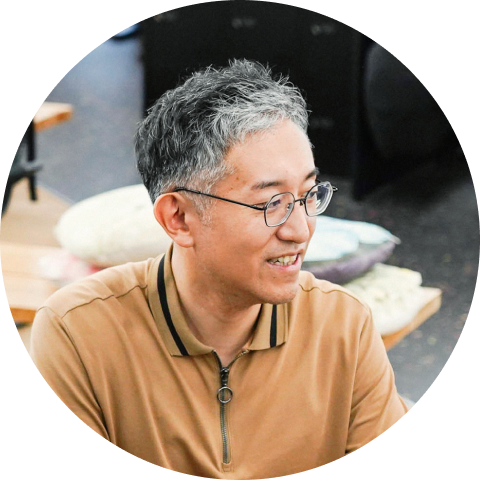
Takeshi Muro
Chief Communication Officer, Sansan
Takeshi’s career began when he joined a major advertising agency in 2003, where he developed public relations strategies in the corporate communications department. After completing his MBA at the University of Michigan (USA), he returned to the agency and worked on M&A in its international unit. He later designed ad campaigns for Japanese and global companies, working his way up to Deputy Head of Creative Consulting. In 2022, he joined Sansan to undertake the challenge of developing communication strategies from a management perspective. As Chief Communication Officer, he oversees Sansan’s internal and external communications.
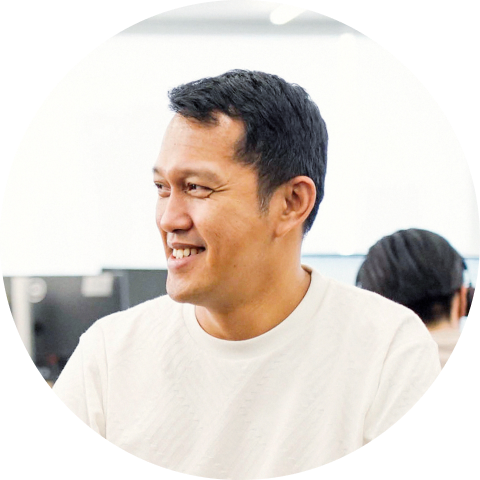
Jay Pegarido
Director, Sansan Global Development Center
A native Filipino, Jay studied computer engineering at the University of San Carlos (Cebu). He then joined Yamato System Development, working and living in Japan, during which time he became highly proficient in Japanese. He then joined Nu Skin Enterprises before moving to Sprasia Japan, where he set up Sprobe, Inc (formerly Sprasia Philippines, Inc). Following that, he established a development center in the Philippines for the Japanese company, International Systems Research. Jay joined Sansan in 2023 and, in the same year, he supported the establishment of Sansan Global Development Center, Inc. He now helps lead Sansan’s global expansion while also contributing to the growth of the Philippine IT industry.
Opportunities for all employees to think together
are rare in Philippine companies
Can you give us some background on the MVV discussion for SGDC?
Takeshi:At Sansan, we call our philosophy, our MVV, etc., the Katachi of Sansan, [katachi means shape or form] and everyone keeps it in mind as they work. We also provide regular opportunities for all employees to share their opinions about it. These are Katachi discussions, and since we started them, we've continually discussed and updated the MVV in line with the phases of our organization and business.
Sansan group companies have implemented a process of understanding each other’s thinking, finding common essential aspects among each opinion, and clarifying the direction to move forward. SGDC believes it’s important for everyone to have the same thoughts and goals so that we can grow further into the future, so this has been a good time to hold MVV discussions.
Are there any other initiatives like this in IT companies in the Philippines?
Jay:In the Philippines, there isn’t much emphasis on MVV, and even IT companies that maintain a mission and vision don’t go as far as discussing them in a way that encourages employees to deeply understand them. This type of involvement is very rare for a company in the Philippines.
One of the top highlights of working here
What is the MVV formulation process?
Takeshi:Different companies take different approaches. I’ve led many branding workshops in my previous work. In some companies, the executives alone conduct the workshops, while in others, the CEO makes the decision from the top down. Sansan is unique in that there's a strong bottom-up desire for everyone to think together.
With SGDC, we first had all participants discuss the value that SGDC creates. We looked at examples of globally well-known companies and we asked, “What kind of technology does SGDC use and what kind of services does it develop?” and “How will this benefit Sansan's employees and the end-users?” The first step was to define the value we can provide.
Then, we discussed brand personality. Specifically, we asked, “If you compared this company (or brand) with a person, what kind of person would that be?” and we verbalized it. After that, we decided on a vision for 3–5 years from now and discussed the mission as what we should do to achieve it.
About 30 members were divided into five groups, and each team repeated the process of discussing and presenting to the whole group, drawing out the commonalities among them. Then, everyone worked together to fine-tune the statement down to the smallest language nuances. We spent almost a full day on the process.
What was particularly important in the formulation process?
Takeshi:Most importantly, the discussion should be lively. We need to note that the level of enthusiasm may vary from team to team and the discussion may go in different directions. As a facilitator, I went around to each group and sought to stimulate the discussion, asking, “What do you think of this point?” or "What do you mean by what you wrote here?"
Timekeeping is also important. This type of discussion often runs out of time, so planning is essential. For example, we let participants know when they had 5 minutes left. But when it comes to important discussions and fine-tuning the language, we must be thorough, even if it goes a bit longer than planned.
For SGDC, there were individual preferences for each word, such as “digitization” or “digitalization” and “deliver” or “bring.” We made adjustments and tried to make sure that everyone could agree on the words.
Was there anything in particular that stood out to you during the discussion?
Jay:This was the first time for all the members to have an opportunity like that. So, at the start, everyone seemed concerned about what we were going to discuss. In the first half of the meeting, some of the groups were quiet, so Takeshi and I went around to the groups and checked in with them. Gradually, people started expressing their opinions. The discussion we all had at the end was really lively and enthusiastic.
Hearing phrases like “to become a global leader in IT,” “to promote digital transformation,” and “to become the #1 IT company in the Philippines,” I felt my optimism growing about SGDC’s future. I feel that for all the participants, this workshop was a top highlight in their work at SGDC.
Our thoughts and actions shape the company’s future
What kind of MVV did you ultimately produce?
Takeshi:Our vision is: “Become Sansan's global innovation hub". The mission is the same as Sansan's, “Turning encounters into innovation.” But we set “To develop advanced solutions for Sansan’s global market” as a sub-statement of that mission.
Jay:During the discussion, some people suggested that we align our vision and mission with those of Sansan's headquarters. However, ultimately, based on SGDC’s position representing Sansan, we decided to keep the vision unique and added the mission sub-statement. We kept discussing these things until we were all satisfied with the final product.
Did you see any results or learnings by having all members taking part?
Jay:Many Filipinos have upbeat personalities and tend to be really chatty in everyday conversation. But in these discussions, even though we were addressing a serious topic, all the members had the chance to actively share their ideas. It was good to get the sense that the entire company was working together on this project.
The workshop let the members think about their personal goals and the company's MVV simultaneously. They had their opinions accepted and reflected as company values, which let them realize that their thoughts and actions will shape the company’s future.
The members who attended the workshop were truly grateful for the opportunity to be involved in such an important process for the company. I want to continue to value such opportunities in the future, because engagement and motivation clearly increased before and after the workshop.
Takeshi:We discussed MVV during that day, but later we had an opportunity to discuss recruitment measures using the MVV that we'd all decided on, aimed at managers and higher level staff. I realized that the MVVs that were decided on reflected global thoughts and passions that went beyond just being a Japanese company’s group company in the Philippines.
In many cases, group companies in the Philippines tend to simply take on part of the work that was done at the Japanese headquarters. Sansan is a little different. SGDC is a “Global Development Center” with the vision of becoming a hub for global innovation. In other words, SGDC is positioned as a partner of Sansan's headquarters, working together to develop global products. I could sense this passion in the discussions on recruitment.
We confirmed the reasons we’re here and we became more united
Did the members change after the MVV discussion?
Jay:I think the unity of the group is much stronger than it was before the discussion. The Philippines has a culture that emphasizes working in a family-like relationship, and, through our discussion, trust between the members grew even stronger. Not only the connections between the company and individuals, but also the relationships between and among members deepened and created a sense of unity.
In witnessing this change, I could reaffirm the significance of involving everyone in discussions about the company’s value and future. I look forward to seeing how the members’ great enthusiasm will help the company grow.
What other insights have you gained in formulating the MVV?
Jay:I realized that the company’s mission and my personal mission were aligned. In my past work with Japanese companies, I had a growing desire to help Filipinos work for companies overseas, and I was able to merge that goal with SGDC’s goals.
How do you see SGDC growing in the future?
Jay:The main focus of our activities will be realizing our vision to “Become Sansan’s global innovation hub.” We need to not only continue developing and globally deploying Sansan’s solutions, such as Sansan and Bill One Bill One, but also further evolve them and provide cutting-edge solutions to the global marketplace. I’m so proud of the SGDC members and I see great potential on the road ahead as well as future growth.

